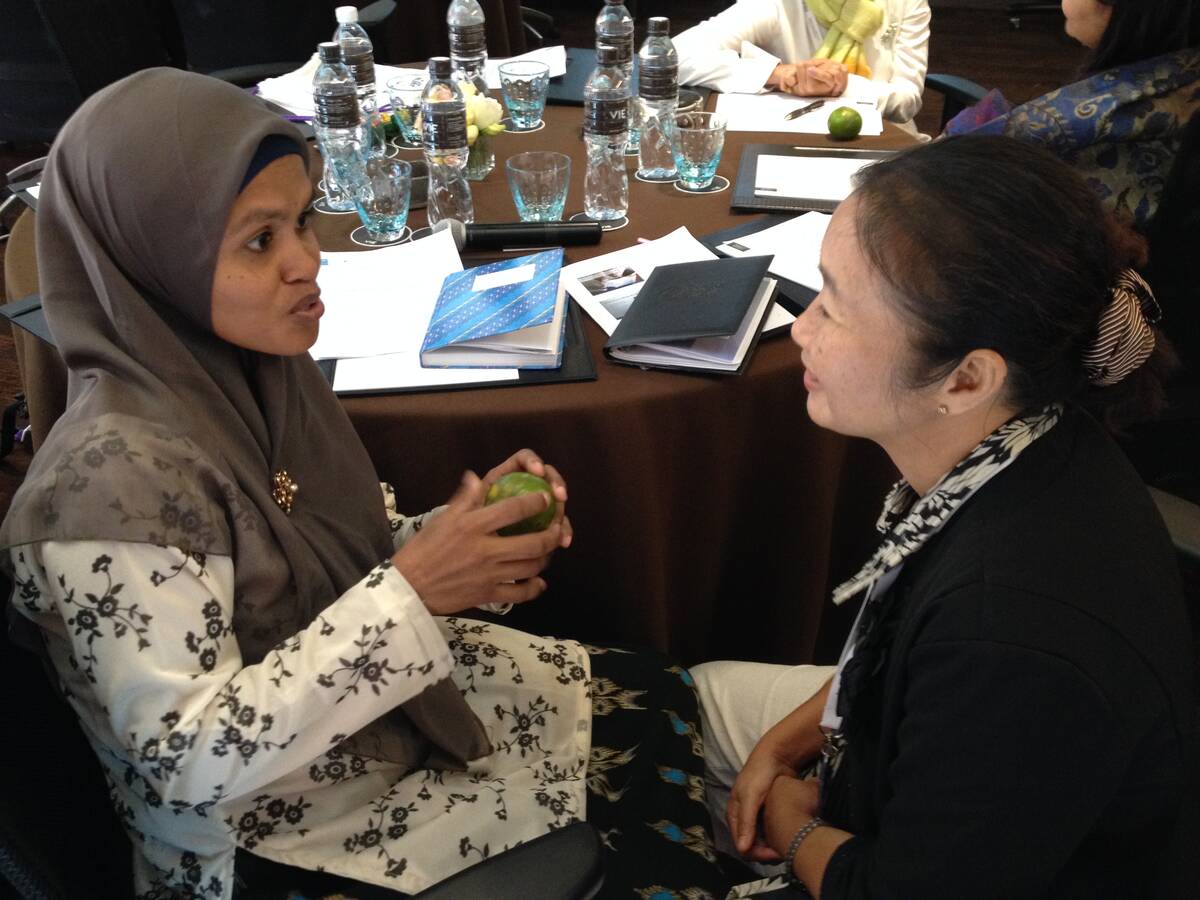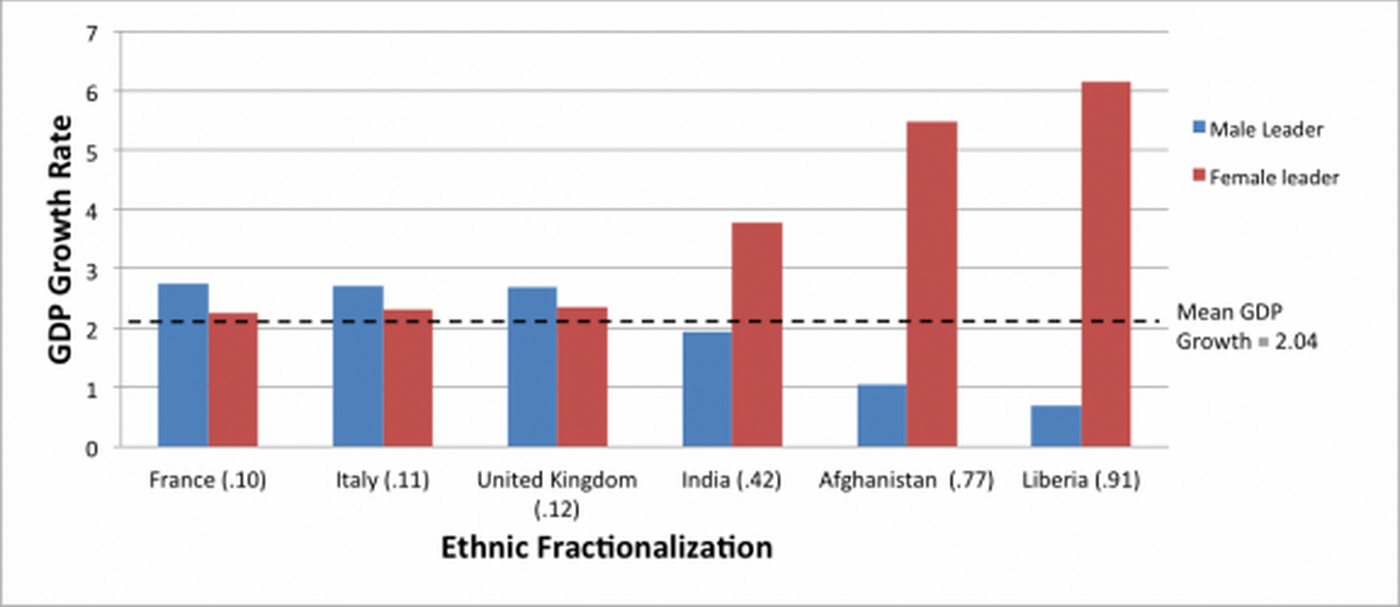Featured Faculty
Previously a Visiting Scholar at Kellogg
Clinical Professor of Management & Organizations

Published under a Creative Commons License. Photo credit: Institute for Inclusive Security
Ethnic diversity is usually touted as an objective virtue for teams, organizations and nations. But economists know that diversity can be a double-edged sword: research has shown that high levels of so-called “ethnic fractionalization” are associated with a decline in gross domestic product. “It’s a well established finding,” says Nicholas Pearce, a clinical professor of management and organizations at the Kellogg School of Management. “Assembling a diverse group of individuals is easy; integrating them into an inclusive whole is hard.”
But instead of taking this correlation as a given, Susan Perkins, an assistant professor of management and organizations at the Kellogg School of Management, along with Pearce and Katherine Phillips of Columbia University wondered “if there was some way to leverage diversity instead of having it be a threat to progress, and what kind of leader might be able to do that.” The researchers found inspiration in the social psychology literature on the differences in leadership styles between men and women. Might female leaders—“who tend to have a more participative, collaborative style than men,” says Pearce—be well-equipped to counteract, or even overturn, the negative association between diversity and economic growth?
“Much of the [psychological] research has focused on how this leadership-style difference plays out in small groups or teams,” Pearce explains. “With the rise of female leaders on the national level over the last half-century, it made us wonder if some of the lessons we’ve learned about women in organizations could translate in the government sector.”
To investigate the question, their research team spent three years “building a unique data set from scratch” to capture observations of male and female national leaders in 139 countries over fifty-five years, while also measuring gross domestic product (GDP) performance alongside ethnic fractionalization (EF) levels. “Diversity and inclusion are not just normative concepts we should get behind because they’ll make us feel better,” Pearce says. “Our process was about trying to go beyond descriptive statistics to actually compare performance outcomes.”
The authors’ analysis reconfirmed the association between highly diverse countries and sluggish economic growth. But when the gender of a national leader was taken into account, the relationship between EF and GDP became dramatically polarized. Their model predicts that in highly diverse countries, having a female leader is associated with a 6% higher GDP growth rate, on average, than having a man at the helm. The more diverse the nation, the more extreme the effect: “In Liberia, one of the most ethnically fractionalized countries we surveyed, the predicted GDP growth was 6.15% under a female leader and 0.69% if the leader was male,” Pearce says.

The authors had drawn inspiration from their Kellogg colleague Benjamin Jones’ paper “Do Leaders Matter?” Not only did it seem to be the case that leaders do, in fact, matter, but so too does their gender—at least in countries like Liberia. “In countries with a lot of internal conflict, oftentimes people are looking for signals that the person in charge is going to be collaborative and not dictatorial or self-interested,” Pearce says. “Women’s gender role is symbolic of collaboration, that they’re going to empower marginalized voices.”
The findings matched the authors’ observations about male and female leadership styles and their effects on the performance of companies and teams. “What intrigued us about [this effect] on the country level also has great implications for other arenas in which Kellogg decision makers might find themselves,” says Perkins. “If we look across industries where female CEOs have had a higher impact than males, oftentimes it is in situations of ambiguity and internal conflict where change or transformation is necessary. On average, women don’t outperform men as CEOs, but they tend to in these situations.” By this logic, a company like Yahoo—struggling to redefine itself to its own employees and shareholders, not just to its customers or competitors—was wise to install Marissa Mayer as CEO.
Some caution should be taken in interpreting the data. Perkins and Pearce make no claims to establishing a causal relationship between ethnic diversity, female leadership, and improved GDP performance. “It’s a compelling correlation, but further work needs to be done to figure out what drives the phenomenon,” Pearce says. The number of female leaders in the dataset—61 out of a total of 1,338 surveyed over fifty-five years—was also relatively small.
The us versus them leadership mentality is running its course, and collaborative leadership styles are more valued than they were before.
In addition, the authors stress that their findings should not be interpreted as a blanket confirmation of gender leadership stereotypes. “The message is not, ‘If you’re a man, you shouldn’t be leading a diverse country going through internal conflict,’” says Pearce. “The idea is that any leader in such a situation should perhaps be more intentional about leading inclusively and collaboratively. It just so happens that these characteristics tend to be embodied in or associated with female leadership styles.” Perkins agrees, noting that “these findings both stretch and shift the societal expectation of gender roles.”
The authors also resist making value judgments about leading collaboratively in a more “female” style versus competitively in a more “male” style. “Neither is always bad or always good. Sometimes hardened resolve is critical, and other times listening and engaging is critical,” Pearce says. What’s more important than gender labeling, he adds, is agility in a leader—whether it is a man or a woman. “You don’t want someone who’s so focused on inclusion that they can’t make a decision, or someone at the other extreme who’s so driven that they don’t include others as they make critical decisions” he says. “It’s not ‘one or the other,’ it’s ‘both’—being able to enact different leadership styles given the needs of the moment.”
But rare is the national leader who can morph his or her style to fit a shifting zeitgeist. And Pearce believes that in an increasingly ambiguous and interconnected 21st-century global economy, “the Us versus Them leadership mentality is running its course, and collaborative leadership styles are more valued than they were before.” Will that translate into ever more female leaders entering the national stage—extending a trend that the authors measured in their data? (According to their paper, “the number of female national leaders in a given year has quadrupled since the early 1950s.”)
Exploring this possibility is exactly what the authors hope to study next, says Susan Perkins: “The science shows that people perceive males and females to have different leadership characteristics, but how often do people act on those perceptions and choose a female leader?” The question is especially relevant as democratic revolutions spread into formerly dictatorial or autocratic regimes in the Middle East and developing world—with or without positive social and economic outcomes. “What if the Arab Spring happened again—would we say, ‘Put a female leader in there’? That’s a stretch,” Perkins says. “But would a similar situation unfold differently if there were an opportunity to have a female leader? It’s an intriguing question to explore.”
Perkins, Susan, Katherine W. Phillips and Nicholas A. Pearce. 2013. “Ethnic Diversity, Gender, and National Leaders.” Journal of International Affairs. 67(1): 85–104.